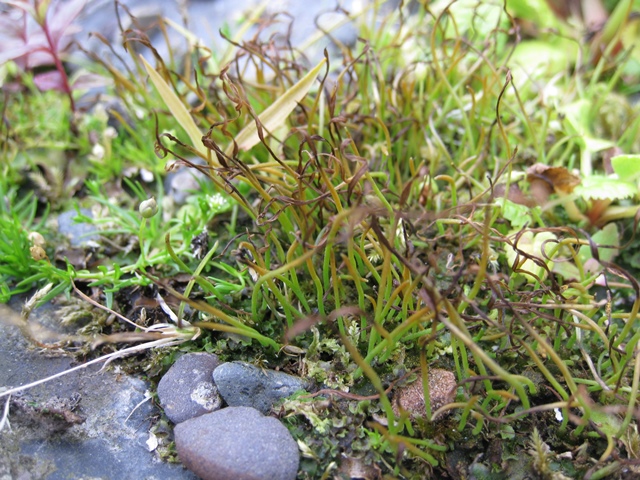Discovery of a plant previously unknown in an area is not what you might expect to happen within a botanic garden. Such places have large managed collections of introduced plants that grow alongside relatively few wild plants. Wild plants in this context are often small and may be tolerated, like mosses and their relations, or actively removed if they are regarded as weeds.
Whilst walking through the Garden Dr David Chamberlain, RBGE botanist, spotted a patch of green on the ground that was, to his well-trained eye, an unusual colour. Closer examination showed it to be a colony of smooth hornwort, Phaeoceros laevis, a species of plant not previously recorded anywhere in the Midlothian area before. Coincidentally, three species of hornwort were recorded by Liz Kungu during the BioBlitz at Logan in the summer and all of them were new records for the local area.
Hornworts are small plants allied to mosses that are primarily found in tropical climates. Britain has four species that are native and they are easily overlooked as they are so small. Only when they produce their spore-bearing structures (sporophytes) does the name hornwort start to make sense. The small horn-shaped projections look rather like small blades of grass and as they release spores they look like small dying blades of grass having turned from green to brown.
What this story shows is that new discoveries can be made in the most unlikely places and something unknown could be literally under your feet.

